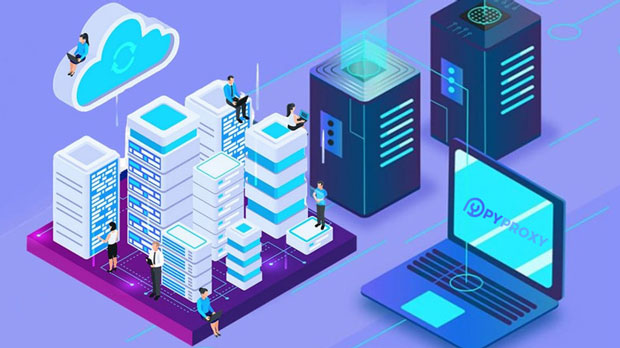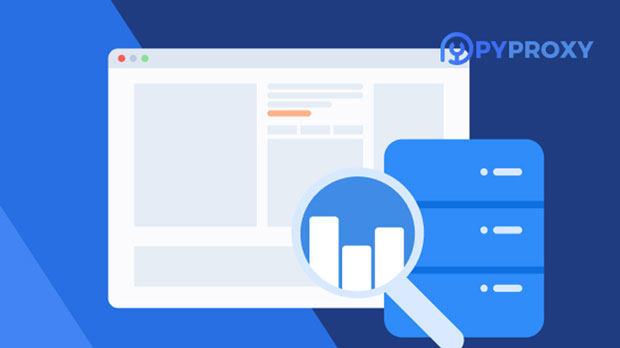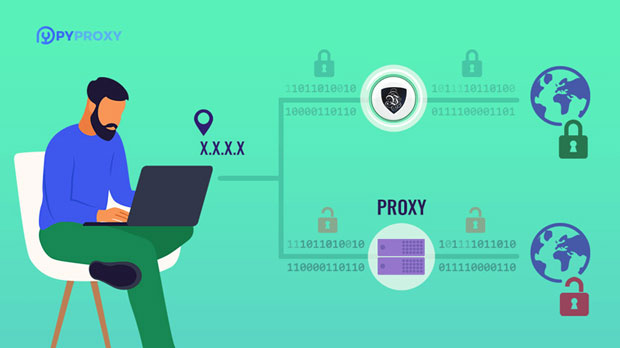How does 5G technology affect the use of proxy IP ports?
With the introduction of 5G technology, the landscape of internet connectivity has seen a dramatic shift. Faster speeds, lower latency, and a more reliable connection are just a few of the many benefits of 5G. But as 5G networks roll out, they also bring about changes in various aspects of internet usage, including how proxy ip ports are utilized. As 5G networks become more widespread, they will impact the way proxy ips are deployed, configured, and used across industries. This article delves into the potential effects of 5G on proxy IP port usage, exploring both the challenges and opportunities it brings. Understanding 5G and Its Key FeaturesBefore diving into how 5G affects proxy IP ports, it’s important to understand the core features of 5G technology. At its core, 5G offers faster internet speeds, reduced latency, increased device connectivity, and enhanced reliability compared to its predecessors, 4G and 3G. 5G is designed to support not only traditional mobile devices but also a vast array of connected devices in the Internet of Things (IoT) ecosystem. The new network promises speeds up to 100 times faster than 4G, along with ultra-low latency that enables real-time communication and instant data processing.These advancements provide opportunities for numerous industries to innovate, from smart cities and autonomous vehicles to telemedicine and augmented reality. However, these changes also require a shift in how internet resources like proxy IPs and ports are used to maintain security, privacy, and optimal network performance.The Impact of 5G on Proxy IP Port UsageThe rollout of 5G technology has a profound impact on proxy IP ports, especially in terms of speed, security, and scalability. Here are some key ways that 5G will influence the use of proxy IP ports:1. Increased Demand for Proxies and IP RotationWith 5G’s ability to support more devices and users per square kilometer, the demand for proxies, especially for businesses and enterprises, will rise. Proxies play a vital role in maintaining anonymity, securing sensitive data, and bypassing geo-restrictions. As 5G allows for faster and more reliable internet, users will expect proxies to handle high-volume traffic and multiple simultaneous connections without performance degradation.Additionally, the increased number of connected devices will require a more frequent rotation of proxy IPs. This is crucial for maintaining privacy and avoiding detection by websites that may track the use of the same IP address over time. The rise of 5G will lead to greater demand for proxy IP services that provide dynamic IP rotation and high-speed capabilities, capable of meeting the demands of businesses and individual users.2. Improved Speed and Latency for Proxy UseOne of the most notable improvements of 5G is its ultra-low latency, with delays as low as 1 millisecond. For proxy IPs, this translates into faster response times and improved performance for tasks like web scraping, content delivery, and data analysis. As businesses depend more on real-time data, the role of proxy IPs becomes even more critical in facilitating seamless interactions between users and websites.5G’s faster speeds will allow proxy services to handle large volumes of data with minimal latency, enabling more efficient operations for industries relying on proxies for various purposes. For instance, financial institutions, e-commerce platforms, and marketers can leverage proxies to access real-time data without delays, leading to better decision-making and enhanced customer experiences.3. Enhanced Security and Privacy for Proxy ConnectionsSecurity and privacy are central concerns in the digital age, especially as 5G enables more connected devices and expands the potential attack surface for cybercriminals. Proxy IPs have long been used to mask the real IP address of users and secure sensitive transactions. As 5G networks become more pervasive, the role of proxies in providing privacy will become even more essential.The increased speed and reliability of 5G will make it easier for users to encrypt their connections through proxy servers, reducing the risk of data breaches. In industries like banking, healthcare, and online services, proxies provide an extra layer of security to protect against cyberattacks, identity theft, and other threats. Furthermore, the rise of 5G will prompt more businesses to adopt VPNs and proxies to secure their data exchanges, ensuring privacy and compliance with data protection regulations.4. Challenges in Scalability and Port AvailabilityDespite the benefits of 5G, the technology also presents some challenges, particularly in terms of scalability. The large number of devices connected to the network could lead to potential issues with IP address allocation and proxy port availability. With 5G, the volume of data traffic is expected to grow exponentially, requiring more efficient management of proxy IP ports to accommodate this demand.Proxy providers may face difficulties in keeping up with the increasing need for new IPs and ports. As more businesses rely on proxy IPs for high-speed operations, there will be a greater strain on available ports, leading to potential bottlenecks and slower performance. This challenge will require solutions that can scale quickly and efficiently to meet the needs of the growing 5G ecosystem.5. The Role of Edge Computing in Proxy NetworksEdge computing, a key component of 5G networks, has the potential to revolutionize the way proxy IPs are utilized. By processing data closer to the user’s location, edge computing reduces the need for long-distance data transfers, improving speed and reducing latency. For proxy IP providers, this shift to edge computing can enhance the delivery of content and services by utilizing local proxy servers instead of relying on centralized data centers.As 5G networks expand, the integration of edge computing will allow for faster, more efficient proxy usage. This will enable businesses to provide more responsive services, with proxies acting as a key element in managing traffic and maintaining performance across the network. For example, edge proxies can deliver faster access to data and content, resulting in improved user experience and enhanced security.Conclusion: The Future of Proxy IP Usage in a 5G WorldAs 5G technology continues to roll out globally, its impact on proxy IP port usage will be significant. With faster speeds, reduced latency, and the ability to support more devices, 5G presents both opportunities and challenges for the use of proxies. Businesses will need to adapt to the increased demand for proxies and IP rotation, while also addressing issues related to scalability, security, and performance.The future of proxy IPs in a 5G world will rely heavily on the ability of service providers to evolve alongside technological advancements. With the right infrastructure and strategies, proxy services can continue to offer the speed, security, and reliability that users demand in the ever-changing digital landscape. As 5G becomes more prevalent, the role of proxies in securing data and ensuring privacy will only become more essential, making it a vital component of the next generation of internet technology.
2025-02-18

























































